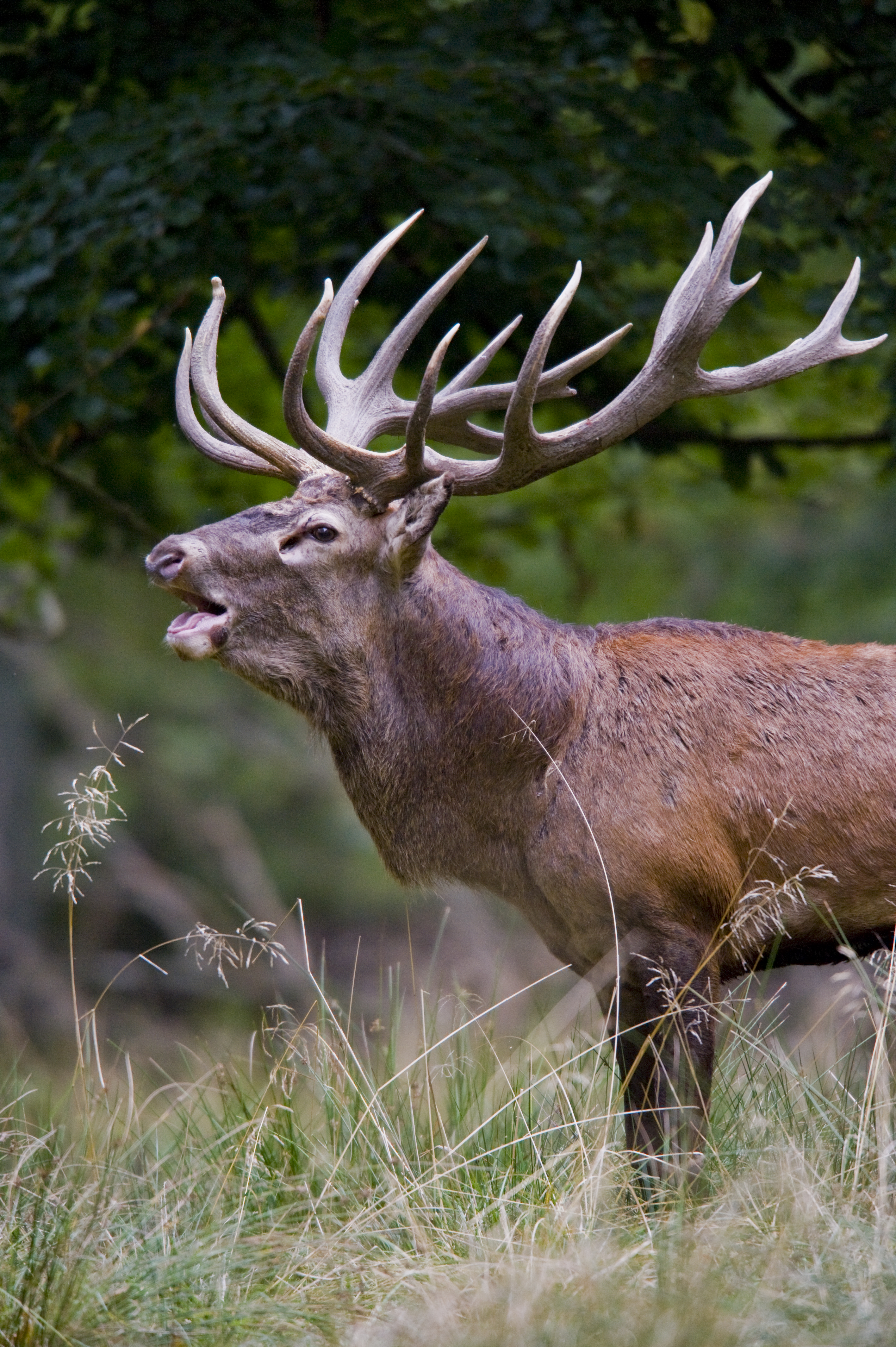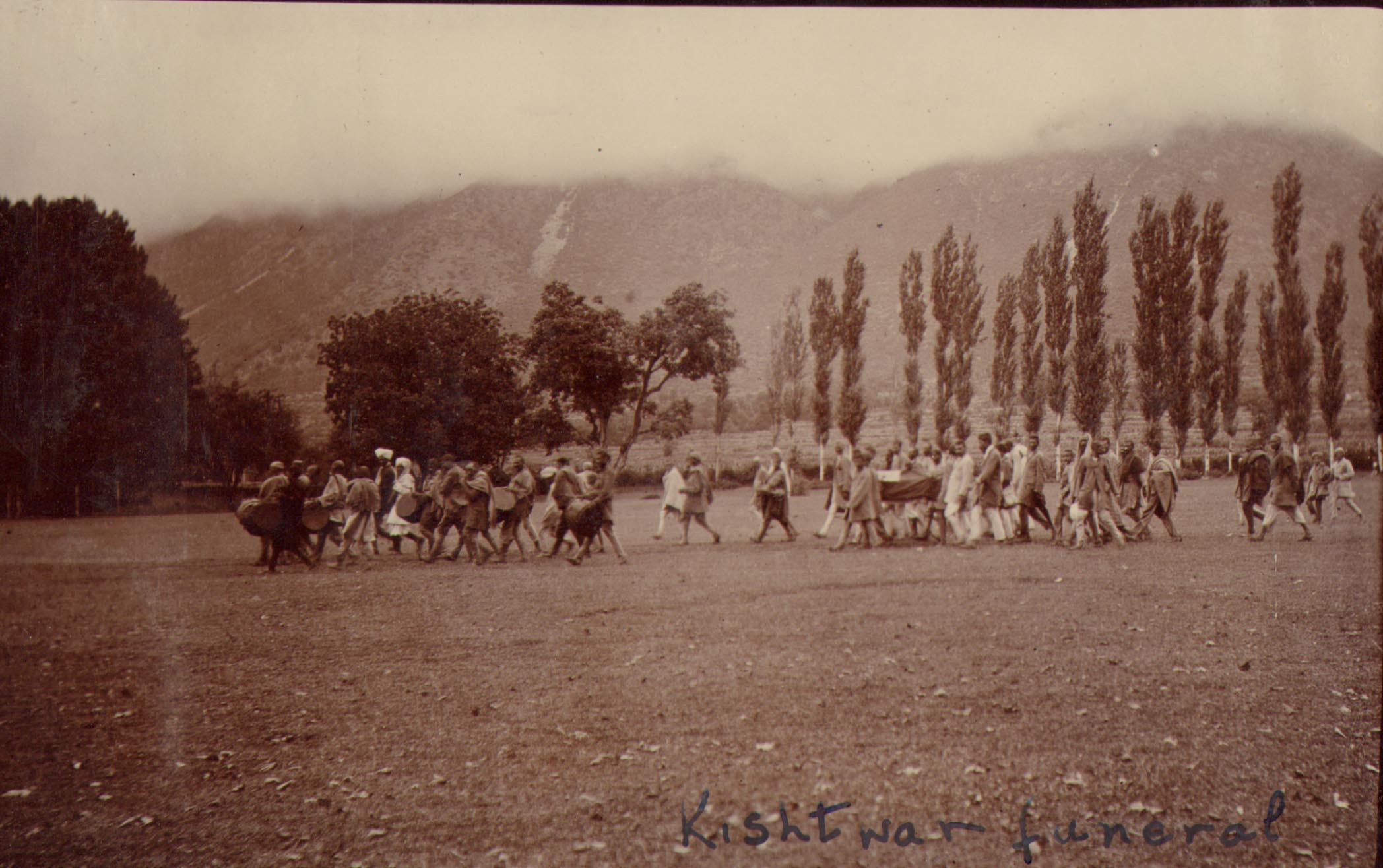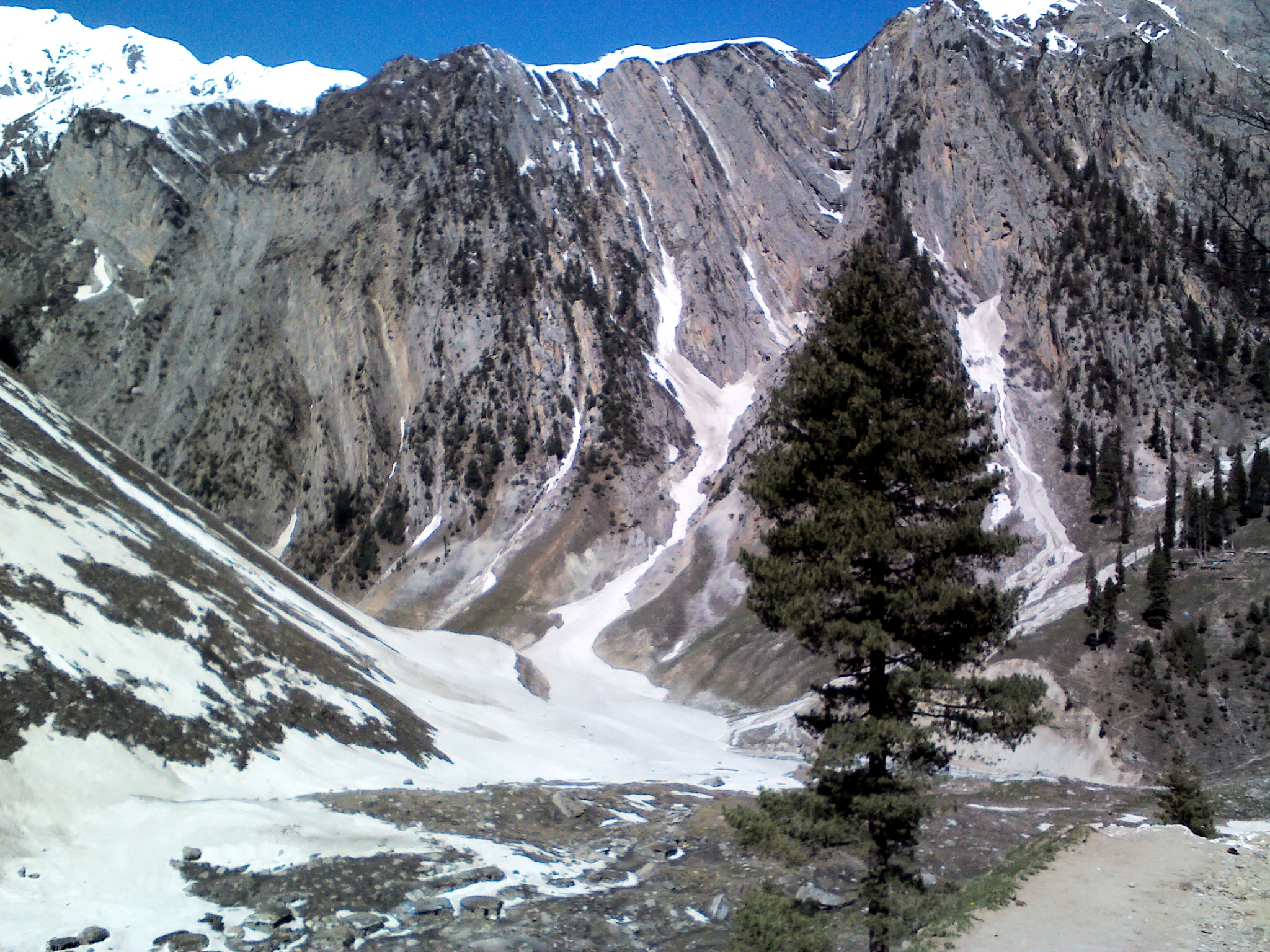|
Kashmir Stag
The Kashmir stag, also called hangul (), is a subspecies of Central Asian red deer endemic to Kashmir and surrounding areas. It is found in dense riverine forests in the valleys and mountains of Jammu and Kashmir and northern Himachal Pradesh. In Kashmir, it is found primarily in the Dachigam National Park and in Tral Wildlife Sanctuary where it receives protection, and elsewhere it is more at risk. In the 1940s, the population was between 3000 and 5000 individuals, but since then habitat destruction, over-grazing by domestic livestock and poaching have reduced population dramatically. Its population is now grown marginally to 289 in 2023 from 197 in 2004. It is the state animal of Jammu and Kashmir. It is the only surviving Asiatic sub-species of the Red deer family. Earlier believed to be a subspecies of red deer (''Cervus elaphus''), a number of mitochondrial DNA genetic studies later had the hangul as a part of the Asian clade of the elk (''Cervus canadensis''). The IUC ... [...More Info...] [...Related Items...] OR: [Wikipedia] [Google] [Baidu] |
Johann Andreas Wagner
Johann Andreas Wagner (21 March 1797 – 17 December 1861) was a German palaeontologist, zoologist and archaeologist who wrote several important works on palaeontology. He was also a pioneer of biogeographical theory. Career Wagner was born in Nuremberg and received a PhD from the University of Erlangen in 1826 after spending some time in the University of Wurzburg (1814-16). He worked as a privatdozent at Erlangen after a tour that included a visit to Paris. In 1832 he became an adjunct to Gotthilf Heinrich von Schubert at the Munich zoological collection. In 1835 he was elected to the Bavarian Academy of Sciences and Humanities, Royal Bavarian Academy of Science. In 1845 he organized a survey of the distributions of 44 vertebrates (16 mammals, 27 birds, 1 reptile) across the districts of Bavaria under auspices of the Kingdom of Bavaria. In 1849 he was made third curator for the zoological collections. He was the author of ''Die Geographische Verbreitung der Säugethiere Da ... [...More Info...] [...Related Items...] OR: [Wikipedia] [Google] [Baidu] |
Antler
Antlers are extensions of an animal's skull found in members of the Cervidae (deer) Family (biology), family. Antlers are a single structure composed of bone, cartilage, fibrous tissue, skin, nerves, and blood vessels. They are generally found only on males, with the exception of Reindeer, reindeer/caribou. Antlers are Moulting, shed and regrown each year and function primarily as objects of sexual attraction and as Weapon (biology), weapons. Etymology Antler comes from the Old French ''antoillier ''(see present French : "Andouiller", from'' ant-, ''meaning before,'' oeil, ''meaning eye and'' -ier'', a suffix indicating an action or state of being) possibly from some form of an unattested Latin word ''*anteocularis'', "before the eye" (and applied to the word for "branch" or "horn (anatomy), horn"). Structure and development Antlers are unique to cervids. The ancestors of deer had tusks (long upper canine tooth, canine teeth). In most species, antlers appear to replace t ... [...More Info...] [...Related Items...] OR: [Wikipedia] [Google] [Baidu] |
Tim Clutton-Brock
Timothy Hugh Clutton-Brock (born 13 August 1946) is a British zoologist known for his comparative studies of the behavioural ecology of mammals, particularly red deer and meerkats.University of Cambridge, Department of Zoology page for Professor Tim Clutton-Brock FRS Education Clutton-Bruck attended . In terms of his university education, Clutton-Brock was educated at the , where he received a |
World Wide Fund For Nature
The World Wide Fund for Nature (WWF) is a Swiss-based international non-governmental organization founded in 1961 that works in the field of wilderness preservation and the reduction of human impact on the environment. It was formerly named the World Wildlife Fund, which remains its official name in Canada and the United States. WWF is the world's largest conservation organization, with over 5 million supporters worldwide, working in more than 100 countries and supporting around 3,000 conservation and environmental projects. It has invested over $1 billion in more than 12,000 conservation initiatives since 1995. WWF is a foundation with 65% of funding from individuals and bequests, 17% from government sources (such as the World Bank, FCDO, and USAID) and 8% from corporations in 2020. WWF aims to "stop the degradation of the planet's natural environment and to build a future in which humans live in harmony with nature." '' Living Planet Report'' has been published every two ... [...More Info...] [...Related Items...] OR: [Wikipedia] [Google] [Baidu] |
World Conservation Union
The International Union for Conservation of Nature (IUCN) is an international organization working in the field of nature conservation and sustainable use of natural resources. Founded in 1948, IUCN has become the global authority on the status of the natural world and the measures needed to safeguard it. It is involved in data gathering and analysis, research, field projects, advocacy, and education. IUCN's mission is to "influence, encourage and assist societies throughout the world to conserve nature and to ensure that any use of natural resources is equitable and ecologically sustainable". Over the past decades, IUCN has widened its focus beyond conservation ecology and now incorporates issues related to sustainable development in its projects. IUCN does not itself aim to mobilize the public in support of nature conservation. It tries to influence the actions of governments, business and other stakeholders by providing information and advice and through building partnershi ... [...More Info...] [...Related Items...] OR: [Wikipedia] [Google] [Baidu] |
Jammu And Kashmir (state)
Jammu and Kashmir was a region formerly administered by India as a state from 1952 to 2019, constituting the southern and southeastern portion of the larger Kashmir region, which has been the subject of a dispute between India, Pakistan and China since the mid-20th century. (subscription required) Quote: "Jammu and Kashmir, state of India, located in the northern part of the Indian subcontinent in the vicinity of the Karakoram and westernmost Himalayan mountain ranges. The state is part of the larger region of Kashmir, which has been the subject of dispute between India, Pakistan, and China since the partition of the subcontinent in 1947." Quote: "Jammu and Kashmir: Territory in northwestern India, subject to a dispute between India and Pakistan. It has borders with Pakistan and China." The underlying region of this state were parts of the former princely state of Jammu and Kashmir, whose western districts, now known as Azad Kashmir, and northern territories, now known as ... [...More Info...] [...Related Items...] OR: [Wikipedia] [Google] [Baidu] |
Livestock
Livestock are the Domestication, domesticated animals that are raised in an Agriculture, agricultural setting to provide labour and produce diversified products for consumption such as meat, Egg as food, eggs, milk, fur, leather, and wool. The term is sometimes used to refer solely to animals which are raised for consumption, and sometimes used to refer solely to farmed ruminants, such as cattle, sheep, and goats. The breeding, maintenance, slaughter and general subjugation of livestock called ''animal husbandry'', is a part of modern agriculture and has been practiced in many cultures since humanity's transition to farming from hunter-gatherer lifestyles. Animal husbandry practices have varied widely across cultures and periods. It continues to play a major economic and cultural role in numerous communities. Livestock farming practices have largely shifted to intensive animal farming. Intensive animal farming increases the yield of the various commercial outputs, but also nega ... [...More Info...] [...Related Items...] OR: [Wikipedia] [Google] [Baidu] |
Over-grazing
Overgrazing occurs when plants are exposed to intensive grazing for extended periods of time, or without sufficient recovery periods. It can be caused by either livestock in poorly managed agricultural applications, game reserves, or nature reserves. It can also be caused by immobile, travel restricted populations of native or non-native wild animals. Overgrazing reduces the usefulness, productivity and biodiversity of the land and is one cause of desertification and erosion. Overgrazing is also seen as a cause of the spread of invasive species of non-native plants and of weeds. Degrading land, emissions from animal agriculture and reducing the biomass in a ecosystem contribute directly to climate change between grazing events. Successful planned grazing strategies have been in support of the American bison of the Great Plains, or migratory wildebeest of the African savannas, or by holistic planned grazing. [...More Info...] [...Related Items...] OR: [Wikipedia] [Google] [Baidu] |
Bhaderwah
Bhaderwah or Bhadarwah (also ''Bhaderwah Valley'') is a town, tehsil, and sub-district in the Doda district of Jammu Division of Jammu and Kashmir (union territory), Jammu and Kashmir, India. Bhaderwah Valley is famous for its beauty, nature. Bhaderwah valley is known as 'Land Of Snakes'. Bhaderwah is also a land of fairs and festivals like Mela Pat, Subar Dhar Mela, Kud dance, Pahari folk songs and music. It also has heritage sites like the Fort, hundred years old mosque and an ancient Vasuki Nag Temple. Etymology and names The name Bhaderwah derives from the Sanskrit word ''Bhadarwasa'' meaning "a place of living of supreme and intellect mankind". Alternatively, the name may derive from ''Bhadarkashi'', a name given to the town for the ancient temple of Hindu goddess Bhadrakali located in the area. The area is called ''Bhadar Avkash'' () and ''Bhadriavkasha'' in the 1148 CE Sanskrit chronicle Rajatarangini of Kalhana Pandita, with the former likely a name given to the region b ... [...More Info...] [...Related Items...] OR: [Wikipedia] [Google] [Baidu] |
Kishtwar District
Kishtwar district is an administrative district of the Jammu division of Indian-administered Jammu and Kashmir of the disputed Kashmir region.The application of the term "administered" to the various regions of Kashmir and a mention of the Kashmir dispute is supported by the tertiary sources (a) through (d), reflecting due weight in the coverage. Although "controlled" and "held" are also applied neutrally to the names of the disputants or to the regions administered by them, as evidenced in sources (f) through (h) below, "held" is also considered politicized usage, as is the term "occupied," (see (i) below). (a) (subscription required) Quote: "Kashmir, region of the northwestern Indian subcontinent ... has been the subject of dispute between India and Pakistan since the partition of the Indian subcontinent in 1947. The northern and western portions are administered by Pakistan and comprise three areas: Azad Kashmir, Gilgit, and Baltistan, the last two being part of a terr ... [...More Info...] [...Related Items...] OR: [Wikipedia] [Google] [Baidu] |
Sind Valley
The Sind Valley is a Himalayan sub-valley of the Kashmir Valley in the Indian union territory of Jammu and Kashmir. The entrance of the Sind Valley lies northeast of Srinagar the capital of Jammu and Kashmir. It is a long gorge valley with an average width of . History The Sind Valley had a strategic importance on the ancient Silk Road. It worked as a bridge between India, China and Central Asia along with Srinagar-Skardu Route. First Hinduism and Buddhism and then Islam spread in Kashmir through this route. The Sind Valley still connects Ladakh with the rest of India through a National Highway NH 1D, though it remains closed during winter due to heavy snowfall at Zojila. Geography The Sind Valley is situated within the jurisdiction of Kangan tehsil, of Ganderbal district. It is bordered by the Kashmir Valley in the west, Zojila in the east, Gurez Valley of the Kishanganga River in the north and the Lidder Valley in the south. It has a length of and reaches ... [...More Info...] [...Related Items...] OR: [Wikipedia] [Google] [Baidu] |
Overa-Aru Wildlife Sanctuary
The Overa-Aru Wildlife Sanctuary is a protected area in Aru Valley, Pahalgam near Anantnag city in Anantnag district of Jammu and Kashmir, India. It lies 46 km from Anantnag city, the district headquarter. It is on the periphery of the two villages of Overa and Aru. The sanctuary spreads over , lies east of Srinagar. It was declared a game reserve in 1945 under the Dogra Rule and later upgraded to a sanctuary in 1981. Geography The Overa-Aru Wildlife Sanctuary lies in the Lidder Forest Division in Anantnag District of the Kashmir province. It is bordered to the north by Sind Valley and to the west by Dachigam National Park. The sanctuary constitutes 38 Forest compartments. The Overa-Aru Wildlife Sanctuary is a catchment area of the Lidder River, a tributary of Jhelum and forms an important source of irrigation and drinking water. Geographical features of the sanctuary include lakes, glaciers and mountain peaks. The most notable are the Tarsar Lake and the Kolahoi wi ... [...More Info...] [...Related Items...] OR: [Wikipedia] [Google] [Baidu] |







